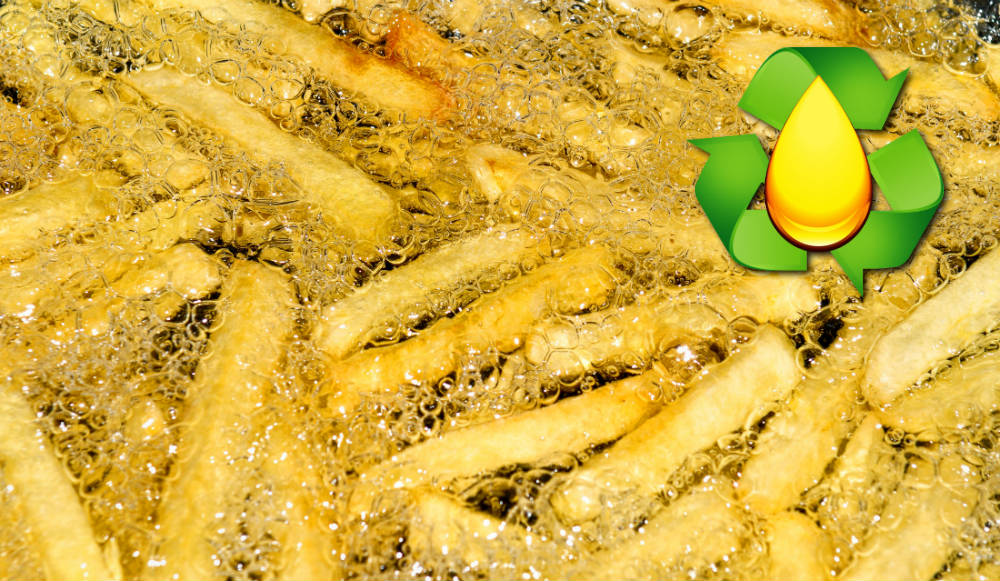Did you know that used frying oil can have a second life? Instead of discarding it improperly, you can turn it into great-quality homemade soap. In this post, we’ll explore how you can make soap from used frying oil, saving money and contributing to the sustainabilityWe’ll detail two different methods for making your own soap and provide tips to ensure the process is safe and effective.

Why Use Used Frying Oil?
Used cooking oil should not be disposed of down the sink, as it can cause blockages and pollute the environment. Furthermore, finding suitable disposal points can be difficult. Turning used oil into soap is a practical and sustainable way to reuse this resource. In addition to reducing waste, you save money on cleaning products and contribute to environmental preservation.
Benefits of Making Soap with Used Frying Oil:
- Economy: Reduce the cost of cleaning products and take advantage of used frying oil.
- Sustainability: Reduce environmental impact by avoiding improper disposal of oil.
- Recycling: Give new life to used oil by transforming it into a useful product.
Making Soap with Used Frying Oil and Rosin
One method for making soap from used frying oil involves using rosin, a natural resin that helps give the soap its consistency. Below, we’ll detail the process:
Ingredients Needed:
- 5 to 7 liters of water
- 4 liters of used frying oil
- 1/2 kg of caustic soda
- 1/2 kg of pitch
Instructions:
- Oil Heating: In a large pot, bring 5 to 7 liters of water and 4 liters of used frying oil to a low boil. Cook for about 2 hours, being careful not to overflow.
- Addition of Soda: Dissolve 1/2 kg of caustic soda in 1 liter of cold water and slowly add to the oil and water mixture, stirring well to avoid the formation of lumps.
- Incorporation of Pitch: Grind 1/2 kg of pitch with a hammer and add to the mixture, stirring constantly. Continue cooking the mixture for another 2 hours.
- Cooling and Cutting: Once ready, pour the soap into a lined cardboard box and let it cool. Cut into bars when firm.
Making Soap with Used Frying Oil and Tallow
Another approach to making soap with used frying oil is to use tallow, which adds a different texture to the soap. Here’s how:
Ingredients Needed:
- 4 liters of used frying oil (filtered)
- 2 liters of beef tallow
- 1 kg of caustic soda flakes
- 4 liters of fuel alcohol
- 2 liters of water
Instructions:
- Mixture Preparation: Heat the tallow and oil in a large plastic bowl until the tallow melts. Do not let the mixture get too hot.
- Soda Preparation: In a plastic bucket, dissolve 1 kg of caustic soda in 2 liters of water, stirring until the soda is completely dissolved.
- Mixing the Ingredients: Pour the diluted soda into the oil and tallow mixture, adding 4 liters of fuel alcohol. Stir continuously until a jelly-like consistency is obtained.
- Cooling and Cutting: Pour the mixture into rectangular plastic bowls and let it cool. When the soap is almost firm, cut it with a knife and let it dry in a cardboard box lined with a plastic bag for 15 days before using.
Tips for a Safe and Efficient Process
When making soap with used frying oil, it is important to follow some precautions to ensure the safety and effectiveness of the process:
- Protection: Wear gloves and safety glasses when handling caustic soda, as it is a highly corrosive substance.
- Ventilation: Work in a well-ventilated area to avoid inhaling toxic fumes.
- Storage: Store soap in a cool, dry place during the curing process to prevent warping.
Other Ways to Reuse Frying Oil
In addition to making soap, used frying oil can be recycled in other ways:
- Biodiesel: Oil can be transformed into biodiesel, a more sustainable alternative to fossil fuels.
- Composting: Small amounts of used oil can be added to organic composts to improve soil texture.
Save and Recycle
Making soap with used frying oil is an excellent way to save and recycle, contributing to sustainability. In addition to reducing oil waste and avoiding the environmental impact of improper disposal, you create a useful and economical product for your home.
Try the recipes, follow the safety tips and enjoy the benefits of turning your cooking oil into soap. With small changes in our daily practices, we can make a big difference for the environment and our finances.
Did you like the tips? Share this post and continue exploring other ways to live more sustainably and economically.
Check out other interesting facts about recycling clicking here.
Learn how to make art by recycling, Click here.
Summary




I thought the recipes were cool. I'm going to make them.
I would like to know what rosin is and where I can find it. I really liked the recipes. I thank you in advance for your attention.
Cicera, rosin improves astringency and makes soap harder. It can be obtained naturally, as pine resin, or as a chemical product. Access our search area and type: Where to buy rosin http://setorreciclagem.com.br/reciclagem-maquinas-equipamentos/
Interesting. I would like to know if there is any other product that does the same job as rosin and is cheaper to produce soap? Thanks.
Just look carefully at the article, as we offer two recipes. One with tar and the other with tallow 😉
I would like to know why my soap that I make in this second recipe sometimes rises and overflows when I add alcohol, no matter how big my basin is.
How do I make the soap white? Mine turns yellow. I've even added white soap but there's no way.
I make it with papaya leaves, put some of
Papaya leaves, one liter of water, blend everything in a blender, then add the soda, one cup of washing powder, half a cup of vinegar, 5 liters of used oil, 1 liter of alcohol.
It's perfect!
Thanks for the tip!